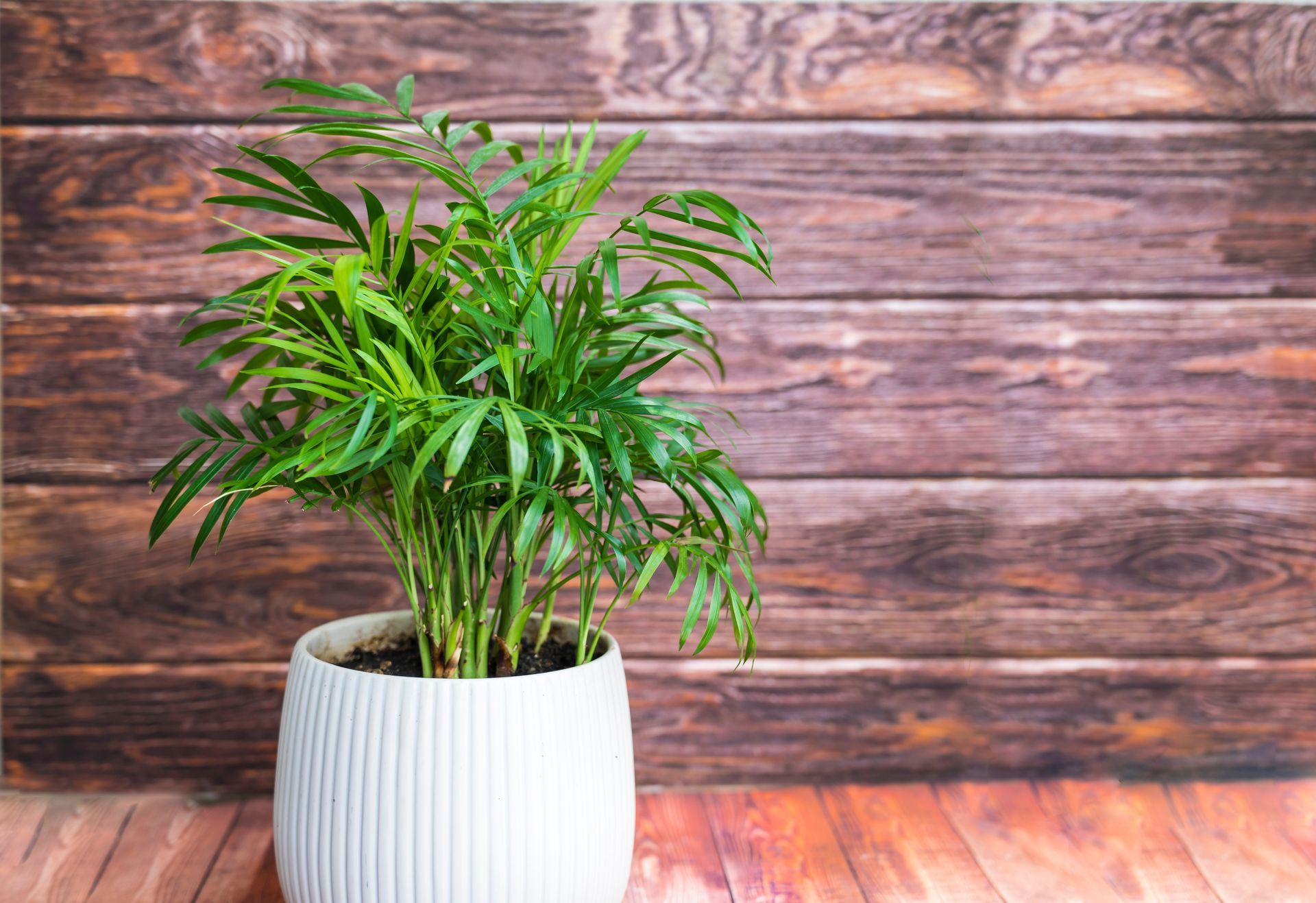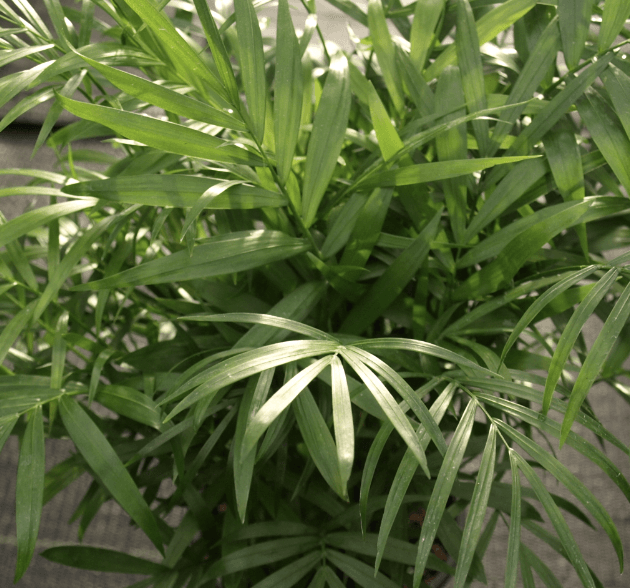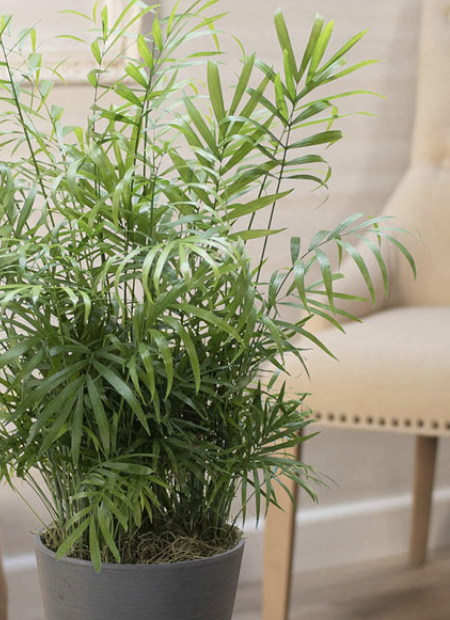How To Care For A Parlor Palm

Caring for a parlor palm indoors is not so easy. It can be a difficult task for some of the more beginner plant owners. We broke it down so you would have everything you need to know to take care of a parlor palm whether you are a beginner or more advanced.
Do you like both outdoors and indoor gardening? We got you covered. We have extensive guides on gardening, including things like drip irrigation systems, how to lay drip tape, the differences between drip tape and drip line and so much more.
Editor's Note: This article was updated on July 25, 2024.
Quick Facts
| Botanical Name | Chamaedorea elegens |
|---|---|
| Common Name | Parlor palm, Neanthe Bella Palm |
| Family | Arecaceae |
| Native Home | Southern Mexico rainforests, Guatemala |
| Plant Type | Palm |
| Average Height | 2 to 6 ft. indoors, up to 16 ft. outdoors |
| Average Width | 2 to 3 ft. spread |
| Zone | 10 - 12 |
Don't Have Time To Read The Full Article? Here's everything you need to know to take care of the PARLOR PALM.
- Light: Bright, indirect sunlight
- Water: Every 2 weeks on average, let soil dry before more water
- Soil: High quality, peat-based, retains moisture for a few days
- Fertilizer: Liquid fertilizer during growing season, slow release during summer
- Pests: Spider mites, mealy bugs
- Toxicity: Not toxic
Table of Contents
Caring for a Parlor Palm: The Ultimate Guide
Parlor palms are an easy-to-care-for, low-maintenance indoor house tree that we here at Sweet New Earth recommend to beginners looking to get into plants and also for anyone trying to add a certain vibe to their home.
When we said low-maintenance what we really meant is no maintenance because this plant doesn't take much to keep this small palm tree happy and healthy. Here's what you need to know.
Is the Parlor Palm a good indoor plant?
The Parlor Palm is one of the most popular indoor plants you can get because of its next-to-zero maintenance routine and the tropical vibe it can add to any room, home or office. With that wonderful deep green foliage, you get all the benefits of palm trees and tropical plants without needing to be in Mexico.
So yes, given the wonderful aesthetic the parlor palm will give to you combined with the watering and light requirements (more on those below), it is safe to say that indoor parlor palms will forever be a good indoor plant.
Parlor Palm Care Guide
Light
The parlor palm is another indoor tree that loves bright indirect light. In fact, with this one, you should err on the side of less light rather than more.
The parlor palm does not like direct sunlight. Direct sunlight will quickly get you scorched leaves and if you put it in a spot with too bright of light, the leaves may change to lighter green or yellow color.
If you notice any of this happening, put your beloved little house tree into a darker spot.
Soil
Since we are specifically talking about indoor palms, the potting soil you need can be any high-quality peat based mix.
You want soil that is able to hold moisture for a few days. The parlor palm prefers moist soil but not overly drenched soil (as you'll see below, this can cause root rot).
Also, make sure the type of soil you get doesn't compact too easily. If the soil compacts, the parlor palm will very quickly become deprived of oxygen which is no bueno for the plant. Look into adding small bits of mulch to the pot to prevent compacting soil.
Water
Plan to water the parlor palm an average of every two weeks. You'll want to let the soil dry out or get close to drying out before watering again.
There are a few variables that you need to consider when watering:
- The size of the parlor palm pot
- The ability of the soil to retain water
- How warm is the location you have the plant
- The season
If you have the tree in a huge pot, you won't need to water it as often because the pot will hold onto more water. If the soil retains water well, then you also wouldn't need to water often.
However, if you have the plant in a spot where it's warm enough to dry out the soil, you may need to water it sooner rather than later.
If you are in the growing season, you'll probably be watering closer to once per week. If you are in the off-season, plan to water every couple of weeks. Pay attention to the soil no matter what.
Here's a few red flags to watch out for when it comes to watering your parlor palm.
Overwatering
Root rot will develop if you continuously overwater your parlor palm. The roots of the parlor palm are not getting enough oxygen, and the plant is essentially drowning. Let the soil dry out completely before watering again.
If you notice your parlor palm start to droop you should check your soil for excess moisture. If it is excessively moist, again, let the soil dry out before another watering.
Underwatering
Just like with overwatering, underwatering can cause the parlor palm to start drooping. If you check the soil and its super dry, then most likely the reason the plant is drooping is that you need to give it more water.

Temperature
The temperature to keep a parlor palm at is roughly room temperature. It will do well from 65 degrees Fahrenheit up to 80 degrees Fahrenheit.
It can tolerate lower temperatures, but if you are keeping your plant indoors this should not be a problem.
If you plan on putting it outside or close to a location that gets cold drafts, the plant will start to falter below 50 degrees Fahrenheit and it will die if it frosts over.
Humidity
Parlor palms do well in average humidity. You can raise the humidity levels if you notice your plant starts to develop brown tips. Brown tips can be caused by cold drafts or dry air so be careful.
Fertilizer
This is a smaller tree so you don't need to fertilize it too often. It will get most of its nutrients from the soil.
Liquid fertilizer is one of the best palm tree fertilizers during the growing season and then during summer to feed your parlor palm or a slow-release fertilizer once during the spring and it should be fine.
Don't fertilize in the Winter.
Repotting
Plan to repot your parlor palm every second year. If you notice the soil is breaking down and getting kind of spongy, then you should repot immediately to avoid root rot.
The plant's roots aren't very strong so be gentle and exercise care when repotting.
Propagation
Leave propagation to the professionals. Propagating parlor palms is done by growing them from the seeds.
Attempting to do it on a parlor palm that isn't in peak health with multiple stems will cause both the mother and daughter plant to enter shock.
If you are a beginner just getting into plants, consider skipping parlor palm propagation. There are easier ways to learn.
Pruning/Cleaning
You do not need to prune your parlor palm. Parlor palms grow from a terminal bud on the central stem and if you cut off that bud your plant will not grow.
Remove any dead foliage you might notice but don't bring any shears close to the stem.
Pests/Diseases
The most common pests for parlor palms are going to be spider mites and mealy bugs. If you notice any sort of discoloration in the foliage, you may have an infestation.
As we mentioned above, parlor palms can develop root rot if you overwater them.
Overwatering is the parlor palms' greatest foe. The second is direct sunlight. The third is spider mites.
If you are a beginner though, no need to fret. There are plenty of warning signs if your parlor palm is sick.
Toxicity: Is the Parlor Palm Poisonous?
Unlike our other favorite plant, the dragon tree, the parlor palm fortunately is not toxic.
This plant is safe for both pets and people, including cats, dogs, and small children. Nothing to worry about with a parlor palm.
Maintenance
The maintenance of a parlor palm is relatively straightforward. Put your new indoor tree into a darker spot in the house and water the plant roughly every two weeks. Much easier than real coconut palm trees.
If you see any red flags, then act accordingly. Overall, the parlor palm is a hard-to-kill plant that's not toxic to anyone in the house and is usually one of the best plants for beginners to cut their teeth.

FAQs
Thanks for stopping by! We here are Sweet New Earth think anyone here looking to get into gardening and planting should consider making their first tree an indoor parlor palm.
They are simple and easy enough so that a beginner can take care of them without much stress.
Also, we just love palm trees, and a parlor palm is the best way to give us that beach feel without going to the beach.
Join our community!
Join to receive guides, insights, and the latest gardening deals!
